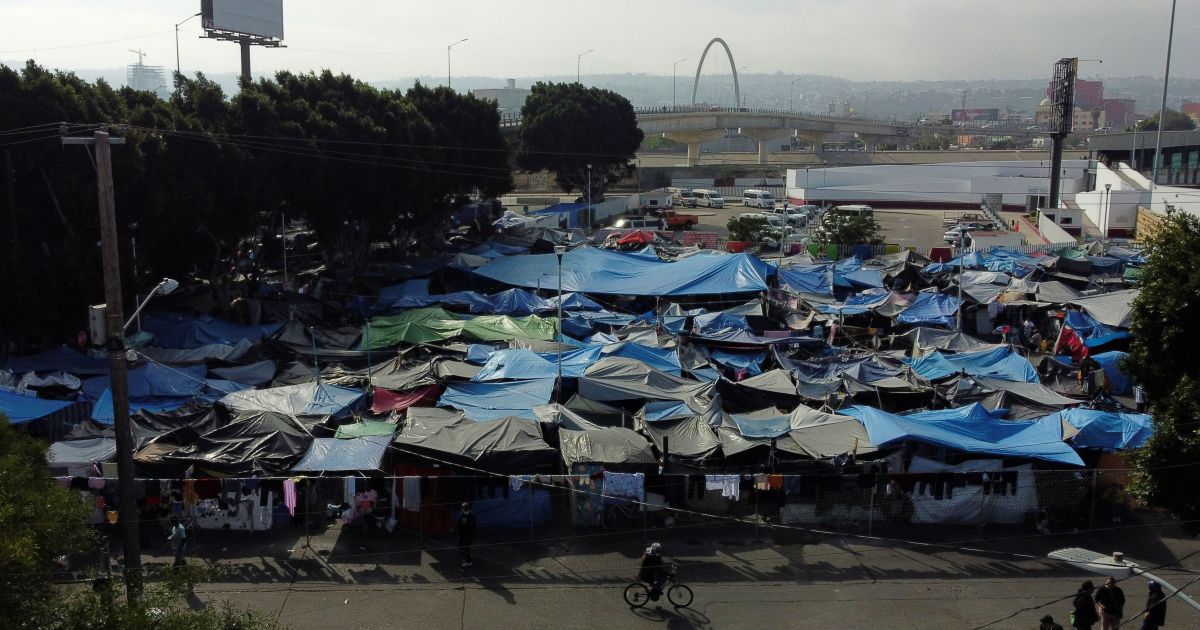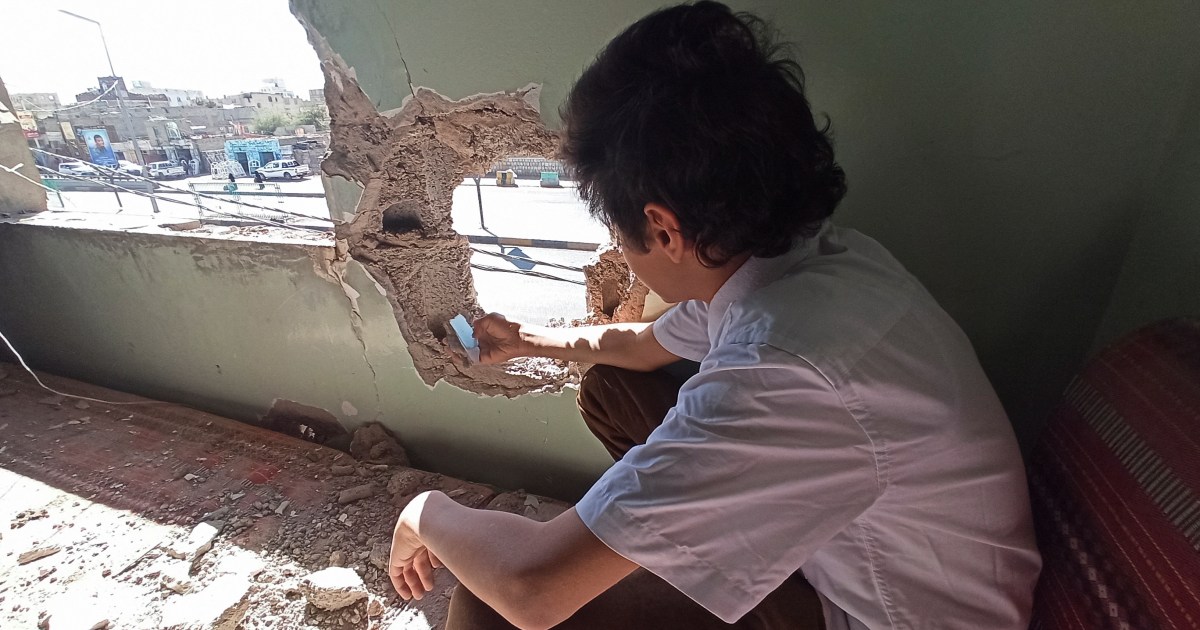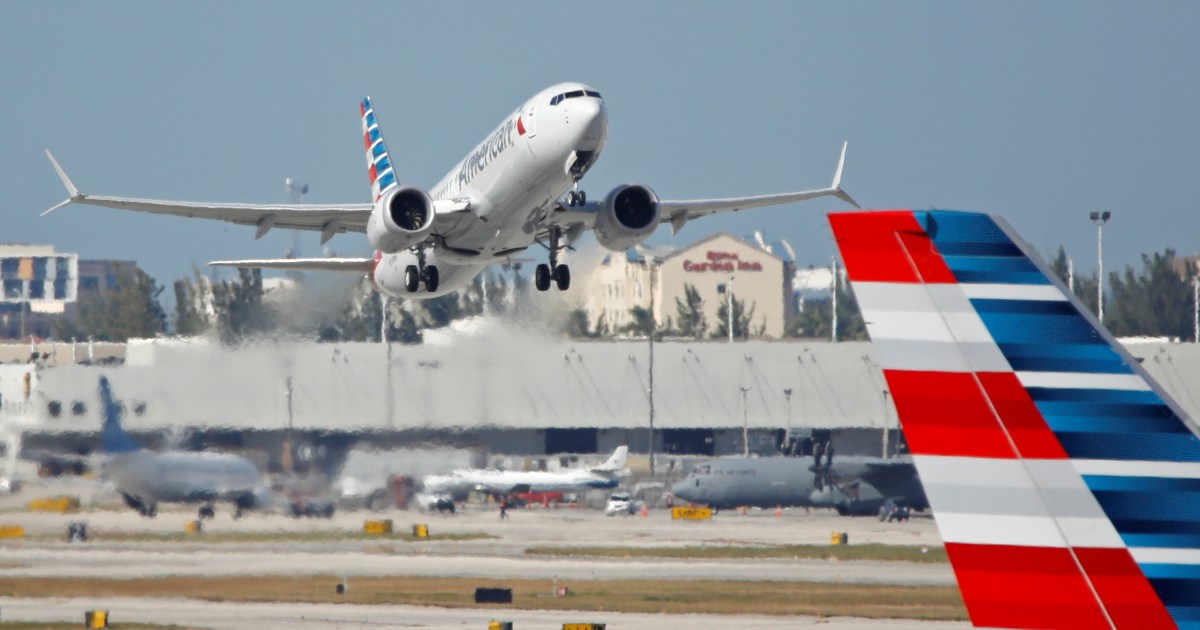Welcome to Tijuana – or not | US-Mexico Border
In February 2017, Guadalupe Olivas Valencia, a Mexican man in his mid-40s, killed himself by jumping off of a bridge in Tijuana, Mexico, which lies directly across the border from San Diego, California.
The suicide took place just minutes after Olivas Valencia had been deported from the United States for the third time. Symbolically, he jumped holding the plastic bag that had been issued to him by US Customs and Border Protection (CBP) for his belongings, as CBP customarily does for deportees.
Now, nearly five years later, US border policy continues to destroy lives – and Tijuana continues to serve as an epicentre of destruction.
The Joe Biden administration has just reinstated the so-called “Migrant Protection Protocols” (MPP) – the criminally euphemistic Donald Trump-era policy that saw Tijuana and other Mexican border cities converted into holding pens for asylum seekers in the US.
According to a 2019 US Department of Homeland Security news release, the MPP constituted an “unprecedented action” that would “help restore a safe and orderly immigration process … and reduce threats to life, national security, and public safety, while ensuring that vulnerable populations receive the protections they need”.
In reality, of course, the arrangement simply rendered vulnerable populations even more vulnerable, as asylum seekers trapped on the border were forced to contend with extortion, kidnapping, sexual violence, and assorted life-threatening dangers – in other words, the same sort of environment that many of them were fleeing in the first place.
The whole setup was all the more barbaric, to be sure, given the US’s own historically pronounced role in helping generate the physical and economic violence that makes people’s homelands uninhabitable – from Honduras to Haiti and beyond.
As the MPP programme receives a new lease on life, the lives of people on the go in Tijuana remain on the line.
The coronavirus pandemic has provided the US government with an additional handy excuse to summarily expel asylum seekers in violation of international law – even as US citizens have been permitted to traverse the US-Mexico border as many times as they please, whether vaccinated or not.
And yet, pandemic and MPP aside, the US has been steadily chipping away at the very principle of asylum. The website of the American Immigration Council notes that, while US law clearly stipulates that anyone who is “physically present in the United States or who ‘arrives’ at the border must be given an opportunity to seek asylum”, CBP officers along the southern border with Mexico have categorically “turned away thousands of people who come to ports of entry seeking protection, including through a practice known as ‘metering’”.
This particular practice began in 2016 “primarily at the San Ysidro port of entry”, the border crossing between Tijuana and San Diego.
I visited Tijuana in November of this year and received a personalised tour of the US back yard migrant psychological torturescape, courtesy of a longtime Tijuana-based migrant rights activist who prefers to be identified only as Cris.
Remarking on the US’s rampant “violations of due process” in terms of asylum processing, Cris stressed that the act of making asylum seekers wait on the border to seek asylum was something “unthinkable” even five years ago – and that its normalisation illustrates how “a lot of very basic legal concepts are being breached across the board” (and the border).
As we passed Tijuana’s iconic “Monumental Arch”, which marks the entrance to the downtown area, Cris described the arch as symbolic of corporate capital that – thanks to “free trade” agreements – is permitted to soar over the US-Mexico border while asylum seekers remain trapped below.
Fittingly, Cris said, there used to be a “Welcome to Tijuana” sign under the arch, but it was taken down precisely on the day that a group of activists launched a migrant rights organisation in the city. It was replaced with a giant television screen.
Our tour of Tijuana also included the El Chaparral migrant camp next to the border, a dismal and cold agglomeration of tents that had just been fenced off by municipal authorities, prompting the following quote from a camp inhabitant in the San Diego Reader: “They are putting us in cages as if we were animals.”
The sense of oppression therein was presumably not helped by the helicopter hovering overhead which Cris said brought back memories of November 2018, when US forces of law and order had undertaken to tear-gas asylum seekers amassed at the San Ysidro crossing.
How is that for protecting vulnerable populations?
The tear-gassing had transpired just days before the US, Mexico, and Canada signed a new-and-improved free trade agreement to allow capital to, you know, continue to soar.
After passing by El Chaparral, Cris and I walked over the bridge towards San Diego – not far from where Guadalupe Olivas Valencia had committed suicide in 2017.
On the bridge, we talked with a middle-aged man from the Mexican state of Michoacán, who had lived for four years in Tijuana after being deported from the US and who spoke with us mainly in English with an American accent.
While usually dedicating himself to selling flowers he had crafted from palm branches, he had now branched out into yarn-based designs, and presented me with a pink-and-blue item that involved a ring with protruding extension. I asked him what it was, and he laughed: “Who knows”.
He was detained on a regular basis, he told us, by the police in Tijuana, who, despite being in blatant cahoots with local methamphetamine distributors and the like, had no qualms arresting people – particularly asylum seekers and deportees – for alleged drug-related offences.
Each detention lasted 36 hours, which naturally made it difficult to accomplish other things in life.
As Cris and I walked back from the bridge in the direction of the arch, Manu Chao’s song “Welcome to Tijuana” inevitably came to mind, with its ensuing, rhyming lyrics: “Tequila, sexo y marijuana”.
And while these lyrics certainly have a catchier ring than, say, “suicide, animal cages, and human rights obliteration”, another line from the song rings true for many of the city’s captive migrants: “Bienvenida a la muerte” – “Welcome to death”.
The views expressed in this article are the author’s own and do not necessarily reflect Al Jazeera’s editorial stance.





